目录
前提:list 的基本介绍
一、构造/析构/拷贝/赋值
1、构造函数
2、析构函数
3、拷贝构造函数
4、赋值
二、修改操作
1、push_back
2、insert
3、erase
4、clear
三、list iterator 的使用
1、operator *
2、operator ++
3、operator --
4、operator !=
5、operator ==
6、begin( ) / end( )
四、迭代器模板参数
1、const_iterator (重要)
2、operator->(重要)
五、完整代码
前提:list 的基本介绍
【list的文本介绍】
⭕list是可以在常数范围内在任意位置进行插入和删除的序列式容器,并且该容器可以前后双向迭代。
⭕ list的底层是双向链表结构,双向链表中每个元素存储在互不相关的独立节点中,在节点中通过指针指向其前一个元素和后一个元素。
⭕ list与 forward_list 非常相似:最主要的不同在于 forward_list 是单链表,只能朝前迭代,已让其更简单高效。
⭕与其他的序列式容器相比(array,vector,deque),list通常在任意位置进行插入、移除元素的执行效率更好。
⭕ 与其他序列式容器相比,list 和 forward_list 最大的缺陷是不支持任意位置的随机访问,比如:要访问list的第6个元素,必须从已知的位置(比如头部或者尾部)迭代到该位置,在这段位置上迭代需要线性的时间开销;list还需要一些额外的空间,以保存每个节点的相关联信息(对于存储类型较小元素的大list来说这可能是一个重要的因素)
一、构造/析构/拷贝/赋值
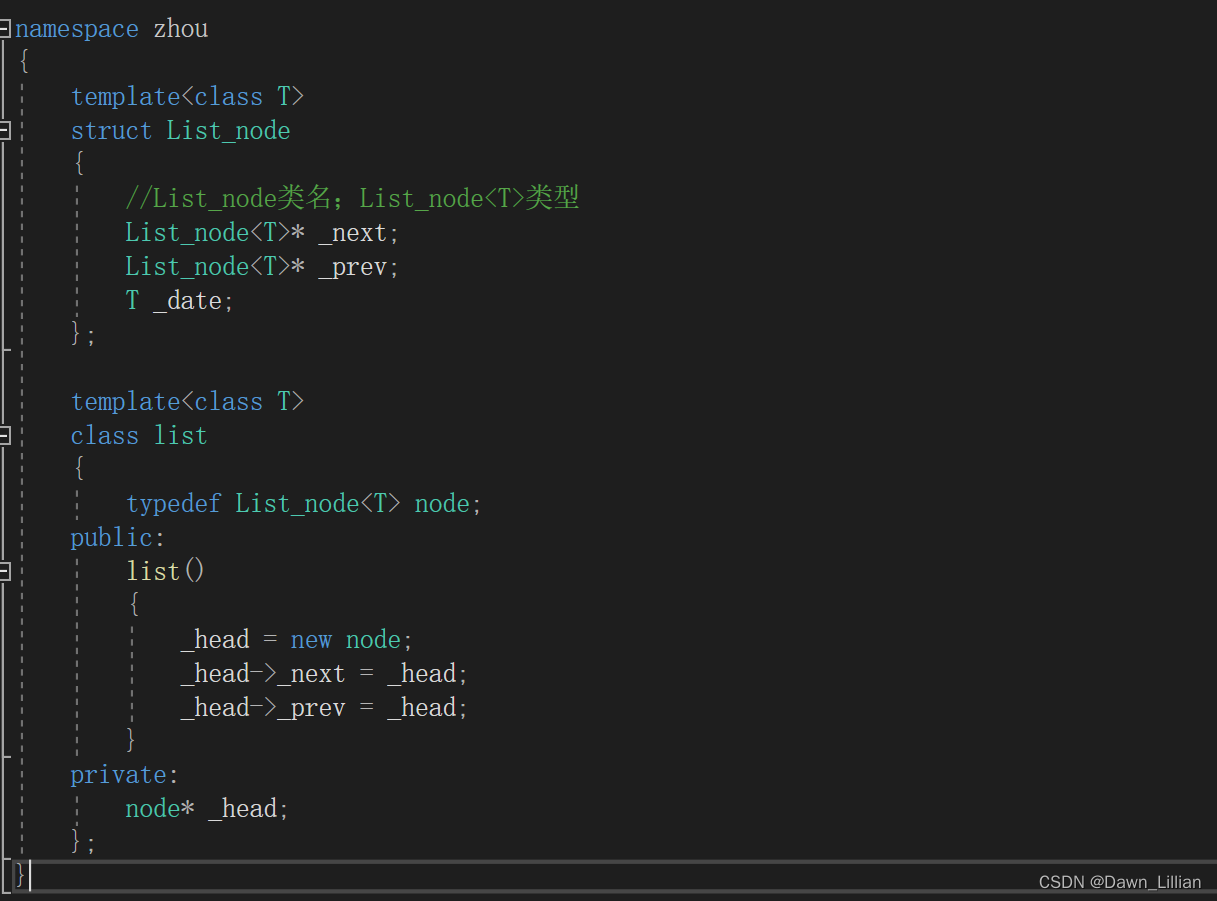
我们已经知道 list 的底层逻辑是双向链表结构,所以 list 定义模版参数为T,并且节点结构体中有两个指针(_next、_prev)。使用 struct 类来定义节点,是为了便于 list 类访问,因为 struct 不对成员的访问进行限制。
1、构造函数
链表是由一个个的结点连接而成,所以第一步先构造出一个结点类。这个结点包含前后指针和对应的数据。对这个节点也需要进行初始化。
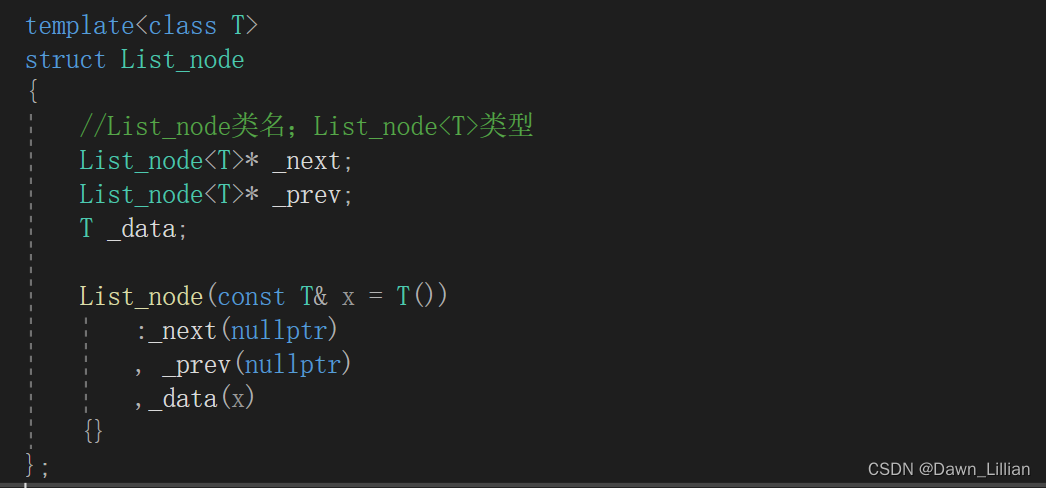

2、析构函数
可以调用 clear 函数,然后把 head 删除

3、拷贝构造函数

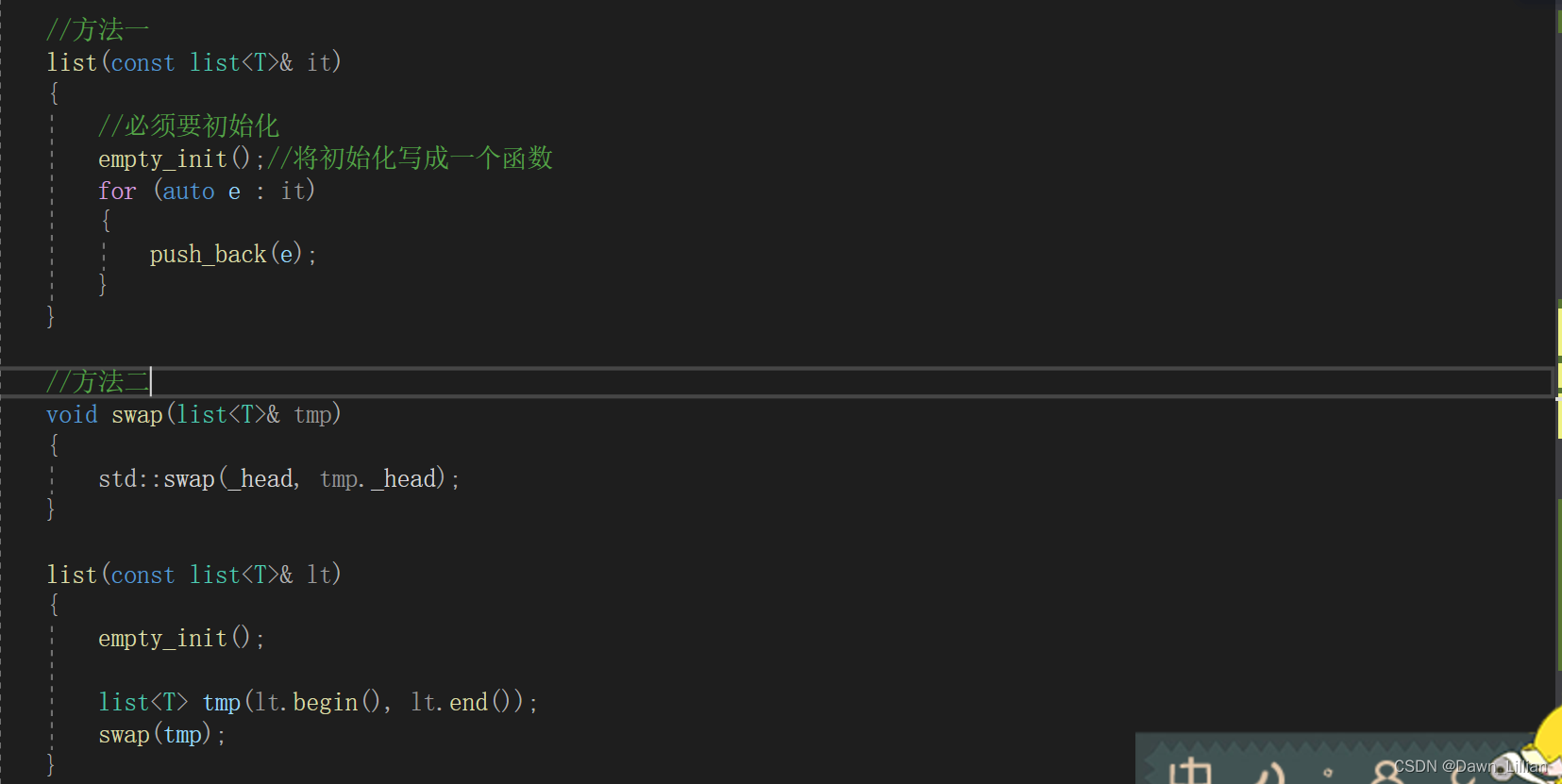 4、赋值
4、赋值

二、修改操作
1、push_back
功能:尾插一个节点。
步骤:利用 head 将最后一个节点记为 tail;
创建一个新的节点 newnode
更新节点的 next 和 prev

2、insert
功能:在 pos 处插入一个新的节点。
步骤:记录 pos 和 pos 前一个位置的值。
新建一个新的节点。
更新节点的 prev 和 next。
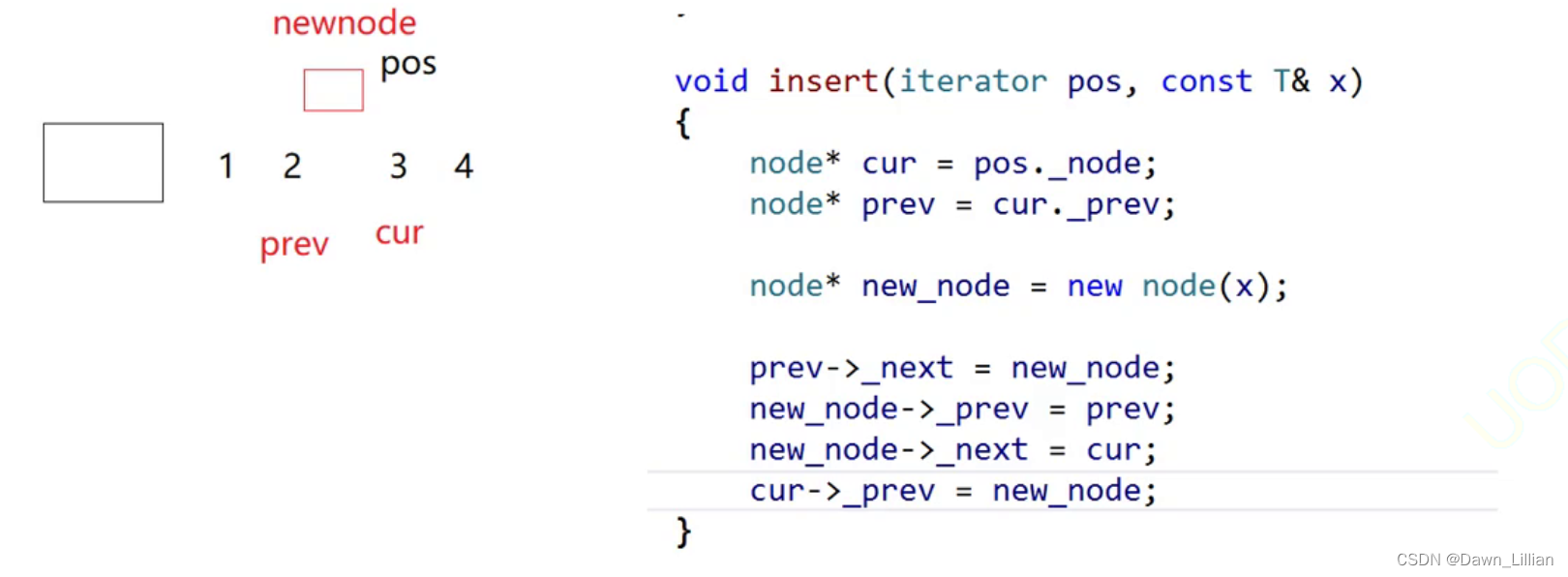
insert 也可以帮助尾插和头插

3、erase
功能:删除 pos 处的节点。
要注意迭代器失效的问题。具体内容可以参考【迭代器失效】

erase 也可以帮助尾删和头删

4、clear
功能:清除所有节点,但是保留头结点。
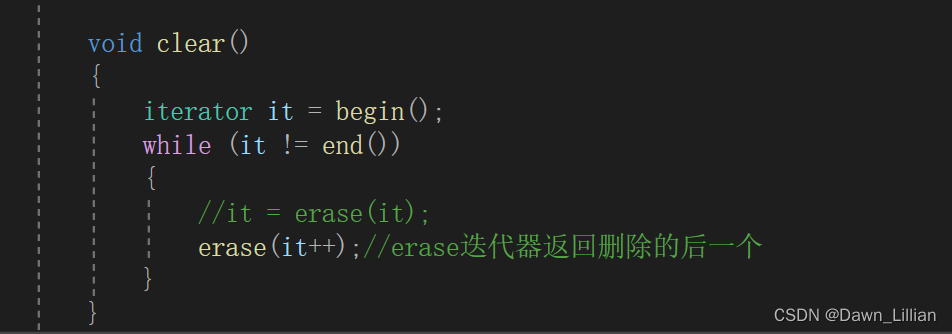
三、list iterator 的使用
list 容器的迭代器不再是像 string 或者 vector 那样的原生指针了,首先因为 list 的各个节点在物理空间上不是连续的,我们不能直接对节点的地址进行 ++ / - - 得到其前、后位置的迭代器;并且我们的数据是保存在节点之中的,不能把节点的指针解引用直接得到里面数据。这些操作我们可以通过封装节点的地址形成一个迭代器类,然后重载这个类的 operator* 和 operator++ 等运算符及其他一系列方法,最终可以向操作指针一样去操作迭代器。

1、operator *
功能:获取该迭代器指向位置的值

2、operator ++
功能:迭代器向后移动一位。返回值依旧是迭代器
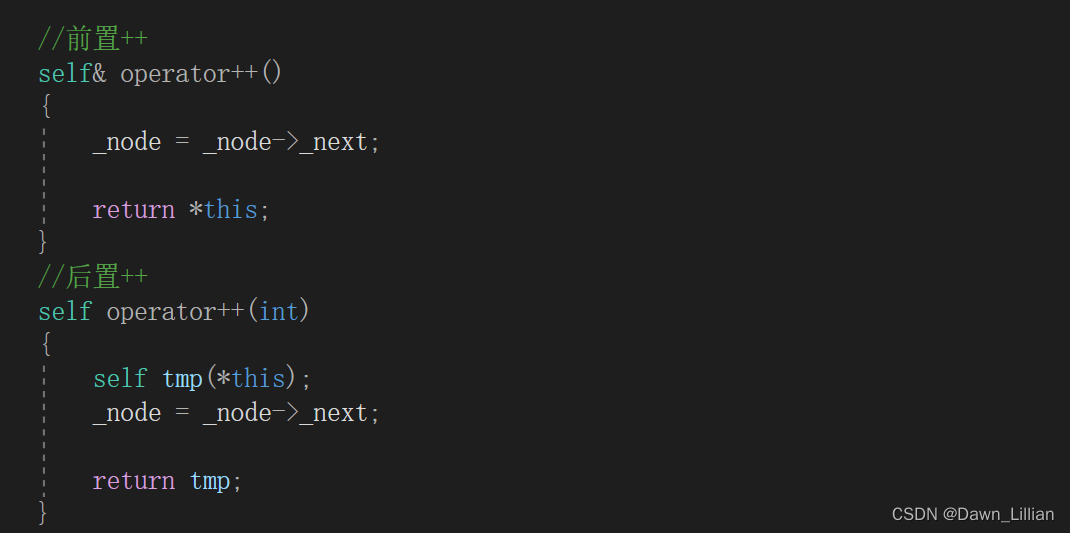
3、operator --
功能:迭代器向前移动一位
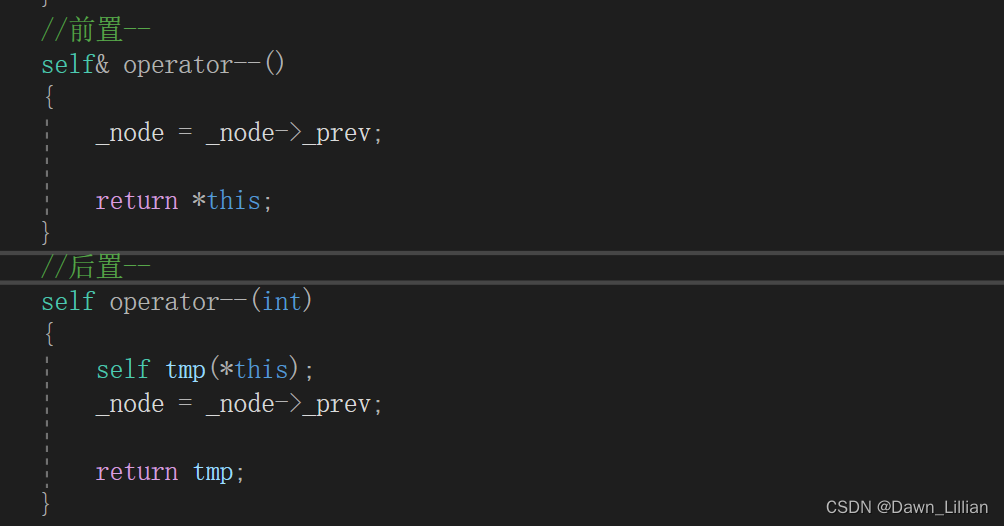
4、operator !=
功能:判断节点的指针是否不等。

5、operator ==
功能:判断节点的指针是否相等。
6、begin( ) / end( )
begin () 和 end() 的 const 版本需要借助 const 迭代器。


四、迭代器模板参数
1、const_iterator (重要)
在上述 begin 和 end 的函数中,const 修饰的是迭代器本身,并不是迭代器指向的内容,导致迭代器所指向的内容依旧可以修改。但是我们使用 const 修饰时,希望达成的目标是不能改变迭代器所指向的内容,迭代器自己可以修改。所以重定义一个 const 迭代器模板。

虽然重新定义一个 const 版本的迭代器可以使代码正常运行,但是代码显得很冗余,只有解引用处会不一样。为了解决这个问题,我们可以在定义迭代器模板时增加一个参数,模板参数不同,就可以实例化为两个不同的类,这样当传 const 修饰的值时就会调用 const 迭代器。
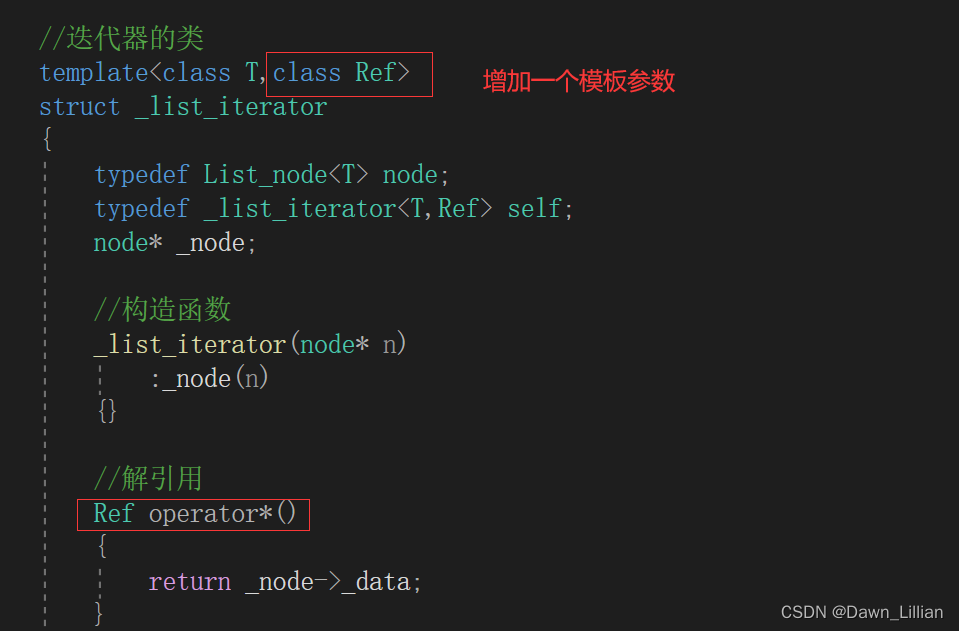

2、operator->(重要)
功能:迭代器是模拟指针的行为,通过->来访问迭代器所指向的内容。

这里我们可以像 const 迭代器一样,增加一个类参数来应对const迭代器而设计的,只不过这个模板参数控制的是箭头运算符重载函数的返回值类型,因为const迭代器使用 ->运算符后,返回的应该是const T类型,而正常迭代器使用 ->运算符后,返回的应该是T。
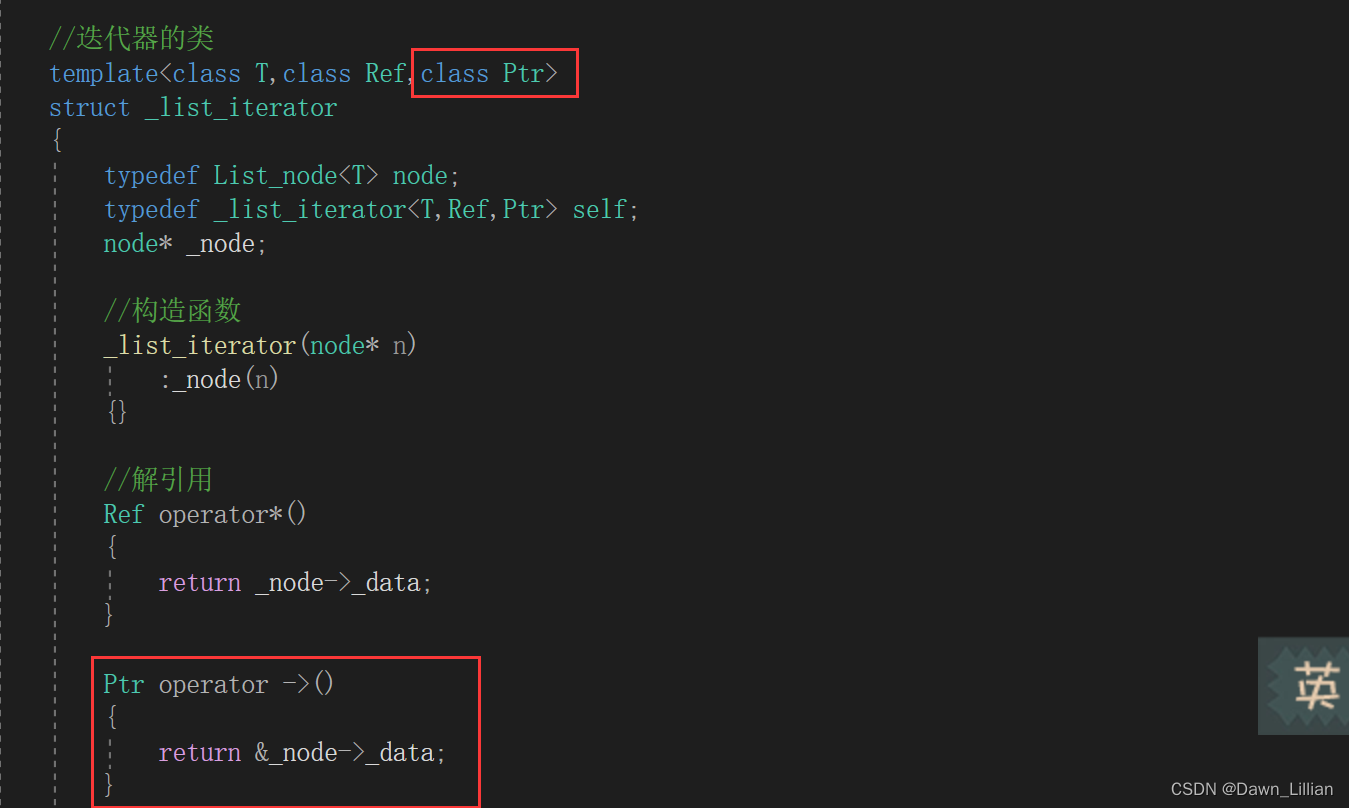
 【补充】为什么要重载 ->
【补充】为什么要重载 ->
我们知道想调用成员可以使用 "." 和 "->"。下面箭头运算符其实是省略了一个->,it->_data 首先调用重载函数 it.operator->(). 返回的T* ,那 T* 是怎么访问的 _data 的呢?这里明显少了一个箭头,正确的写法应该是这样it->->_data ,但编译器为了简洁好看将一个箭头省略了。
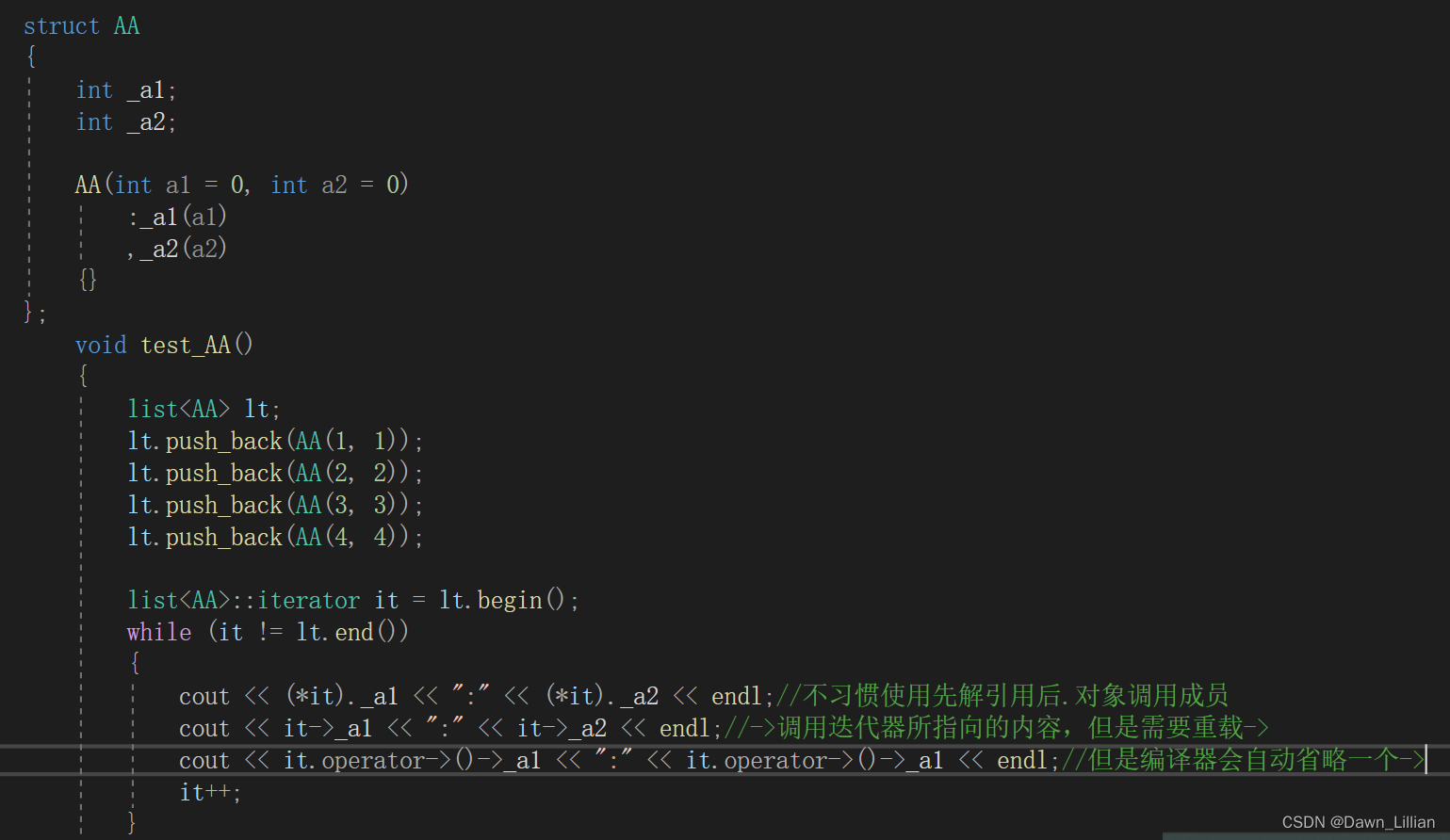
五、完整代码
#define _CRT_SECURE_NO_WARNINGS
#pragma once
#include<assert.h>
#include<iostream>namespace zhou
{template<class T>struct List_node{//List_node类名;List_node<T>类型List_node<T>* _next;//指向后一个节点List_node<T>* _prev;//指向前一个节点T _data;//存储的数据//构造函数//T()List_node(const T& x = T()):_next(nullptr), _prev(nullptr),_data(x){}};//迭代器的类template<class T,class Ref,class Ptr>struct _list_iterator{typedef List_node<T> node;typedef _list_iterator<T,Ref,Ptr> self;node* _node;//构造函数_list_iterator(node* n):_node(n){}//解引用Ref operator*(){return _node->_data;}Ptr operator ->(){return &_node->_data;}//前置++self& operator++(){_node = _node->_next;return *this;}//后置++self operator++(int){self tmp(*this);_node = _node->_next;return tmp;}//前置--self& operator--(){_node = _node->_prev;return *this;}//后置--self operator--(int){self tmp(*this);_node = _node->_prev;return tmp;}bool operator!=(const self& s){return _node != s._node;}bool operator==(const self& s){return _node == s._node;}};/*template<class T>struct __list_const_iterator{typedef List_node<T> node;typedef __list_const_iterator<T> self;node* _node;__list_const_iterator(node* n):_node(n){}const T& operator*(){return _node->_data;}self& operator++(){_node = _node->_next;return *this;}self operator++(int){self tmp(*this);_node = _node->_next;return tmp;}self& operator--(){_node = _node->_prev;return *this;}self operator--(int){self tmp(*this);_node = _node->_prev;return tmp;}bool operator!=(const self& s){return _node != s._node;}bool operator==(const self& s){return _node == s._node;}};*/template<class T>class list{typedef List_node<T> node;public:typedef _list_iterator<T,T&,T*> iterator;typedef _list_iterator<T,const T&,const T*> const_iterator;//typedef __list_const_iterator<T> const_iterator;void empty_init(){_head = new node;//给头结点创造出一个空间_head->_next = _head;_head->_prev = _head;//让其头和尾指向自己,形成一个循环列表}list(){empty_init();}~list(){clear();delete _head;_head = nullptr;}//方法一//list(const list<T>& it)//{// //必须要初始化// empty_init();//将初始化写成一个函数// for (auto e : it)// {// push_back(e);// }//}//方法二void swap(list<T>& tmp){std::swap(_head, tmp._head);}list(const list<T>& lt){empty_init();list<T> tmp(lt.begin(), lt.end());swap(tmp);}//赋值list<T>& operator=(list<T> lt){swap(lt);return *this;}iterator begin(){/*iterator it(_head->_next);return it;*/return (_head->_next);}iterator end(){return (_head);}const_iterator begin() const{return const_iterator(_head->_next);}const_iterator end() const{return const_iterator(_head);}void push_back(const T& x){/*node* tail = _head->_prev;node* newnode = new node(x);newnode->_next = _head;_head->_prev = newnode;tail->_next = newnode;newnode->_prev = tail;*/insert(end(), x);}void push_front(const T& x){insert(begin(), x);}void pop_back(){erase(--end());}void pop_front(){erase(begin());}void insert(iterator pos, const T& x){node* cur = pos._node;node* prev = cur->_prev;node* new_node = new node(x);prev->_next = new_node;new_node->_prev = prev;new_node->_next = cur;cur->_prev = new_node;}iterator erase(iterator pos){assert(pos != end());node* prev = pos._node->_prev;node* next = pos._node->_next;prev->_next = next;next->_prev = prev;delete pos._node;return iterator(next);}void clear(){iterator it = begin();while (it != end()){//it = erase(it);erase(it++);//erase迭代器返回删除的后一个}}private:node* _head;};void test_list1(){list<int> It;It.push_back(1);It.push_back(2);It.push_back(3);It.push_back(4);/*list<int>::iterator It = it.begin();while (It != it.end()){cout << (*It) << " ";It++;}*/list<int>::iterator it = It.begin();while (it != It.end()){(*it) *= 2;//修改数据cout << *it << " ";//读取数据++it;}cout << endl;}struct AA{int _a1;int _a2;AA(int a1 = 0, int a2 = 0):_a1(a1),_a2(a2){}};void test_AA(){list<AA> lt;lt.push_back(AA(1, 1));lt.push_back(AA(2, 2));lt.push_back(AA(3, 3));lt.push_back(AA(4, 4));list<AA>::iterator it = lt.begin();while (it != lt.end()){cout << (*it)._a1 << ":" << (*it)._a2 << endl;//不习惯使用先解引用后.对象调用成员cout << it->_a1 << ":" << it->_a2 << endl;//->调用迭代器所指向的内容,但是需要重载->cout << it.operator->()->_a1 << ":" << it.operator->()->_a1 << endl;//但是编译器会自动省略一个->it++;}}}


)


![[Unity3D]--更换天空盒子](http://pic.xiahunao.cn/[Unity3D]--更换天空盒子)


)








 4-2、线条平滑曲面(原始颜色)但不去除无效点)

)